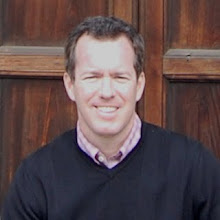I returned to the Minagawa home on Thursday night to find a Rotary party starting. Since our group didn't make a formal presentation to Jun-san's club, I was the guest of honor and made my presentation in Japanese. Though I was tired, it was a nice party and I enjoyed meeting everyone-- Jun-san explained to me that "house parties" are quite rare in Japan, and this was the first at his house in around ten years.
The next day was another "vocational day," and Kasey and I started out with a tour of a building under construction in downtown Osaka. We donned white hardhats and white gloves, and took the job elevator to the rooftop. Great views of Osaka from the roof and elevator, but we had to watch our step! The exterior of the building is clad in autoclaved lightweight concrete panels, which are attached to the concrete building frame using metal clips.
The owner of the construction company, Kenro Kakeya, is a really interesting guy. He attended Tokyo University, and lived in Washington D.C. for 6 years as editor of the Nihon Keizai Shimbun. He returned to Japan and gave up his journalism career to take over his father's company. I've found this to be a frequently occurring phenomenon in Japan, with multi-generational family businesses. My first host father, Hamatani-san, is the fourth generation to run his family company. My current host, Ohmichi-san is an architect, and his son Makoto just started working at the architecture firm.
On our way to lunch, we stopped at another building under construction, this one designed by Tadao Ando. Kakeya-san's company did the concrete work (which is a lot of work on an Ando building!). He told me that it was a demanding job, and Ando specified that all formwork be new. Kakeya-san was justifiably proud of his company's work, but explained that it was not a very profitable job for them, nor for the general contractor, but that it was a "desirable" job due to the association with Ando.
After a nice lunch we drove to the hills of Oyamazaki outside of Osaka, to visit the Oyamazaki Villa Museum (owned by Asahi Beer!). The museum is the former home of an Anglophile named Kaga Shotaro, a Kansai businessman. The house was built in the early 1930s in what might be described as a "Japanese Tudor" style. It was later purchased by Asahi, and now functions as a showplace for folk crafts.
In 1995 a new hall was designed by Tadao Ando. The hall serves as a modern foil to the original building, acting as a link to the exterior-- from the museum approach, it appears as a concrete frame with large sheets of glass that allow views through it to the garden beyond. A cylindrical room known as the "Sunken Jewel Box" sits below grade, and in it are displayed Impressionist paintings by Monet.
Next we visited Bentenshu Meioji Temple, operated by Jisho Omori, another of our hosts that day. It is a beautiful temple of folded concrete, with luminous blue-green tiles covering its exterior surface.
The temple is surrounded by a pond, on the surface of which sakura petals had collected.
Our final stop was in Ibaraki, another pretty hill town outside of Osaka. Here we saw one of Ando's most famous buildings, and the first Ando project that I learned of in architecture school.
The Church of the Light is a concrete box with a cross incised on the wall behind the altar-- this cross of transparent glass illuminates the chapel. We weren't able to get inside, but I pressed my camera up against a narrow window to get a photo of the interior.
It was a busy but great day, and I ended it with a final dinner with Jun-san and Masako-san. We had a lot of good food, some beer, wine and plum sake. There were three little raw squid on a plate that I was a bit afraid to eat. When Masako-san told me what they were called, I knew I had to try them. Hotaru-ika, or "firefly squid" are caught only in springtime, and only in Toyama prefecture.
Their name derives from the method used to catch them-- fishermen set out lanterns at night, and the small squid are drawn to the light and caught in nets. No more than 2-3 inches long, they are considered a springtime delicacy. I learned the hard way you are meant to remove the eyes (hard as bb's) before eating them. Masako-san explained that in Japan, there are very specific foods to eat for each season. For instance, many of the foods I have eaten on this trip reference the sakura, an indication of springtime. She also mentioned the New Year's tradition of eating kuromame, or black beans. When I stayed with the Hamatani family, I saw an old recording of Doi Masaru (Emiko-san's chef father) preparing this dish. The color of the beans references a worker in the fields, whose skin turns dark under the sun-- thus they are a portent of hard work and prosperity. Doi Masaru's recipe called for dropping a couple of rusty nails into the bean pot, which was to be heated at a simmer for 8 hours. The rusty nails turn the beans to a deep, inky black.
The dinner was an enjoyable end to my stay with the Minagawa family, shown here in front of their house with their friend Mrs. Shoji and her grandson. Shoji-san (who treated me to the baseball game earlier in the week) took the picture, then he and his wife and grandson drove me to the train station and waited with me for 45 minutes. Hard to describe the hospitality I have been shown here in Osaka...
Haiku #10
think i'll close my eyes
just for a minute or two
and dream of my home
13 April, 2010
Subscribe to:
Post Comments (Atom)
















No comments:
Post a Comment